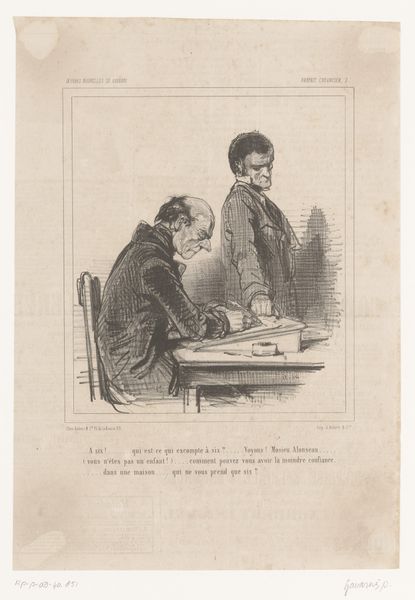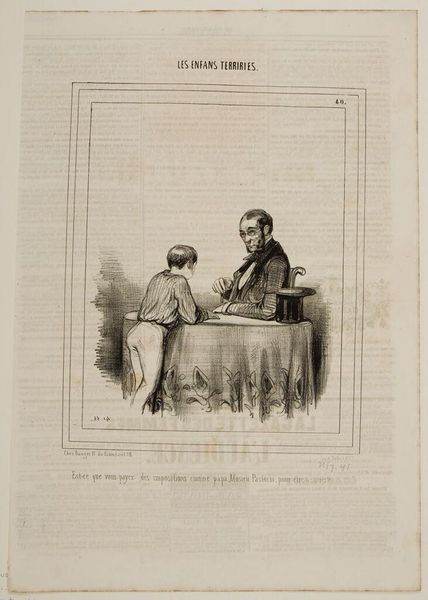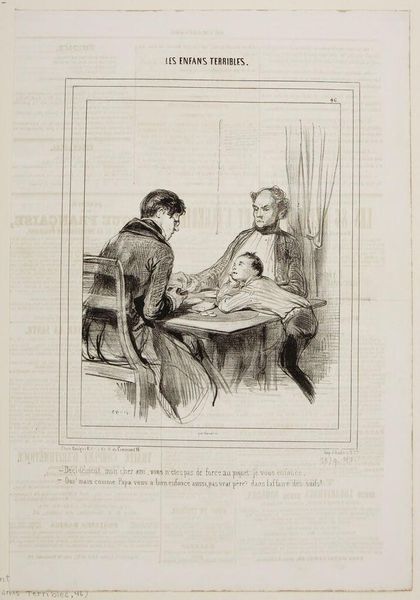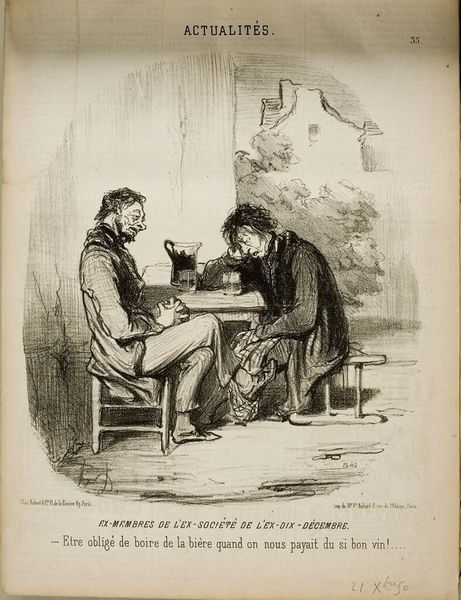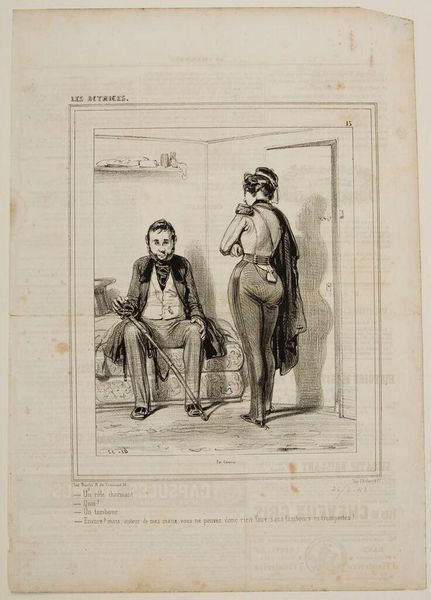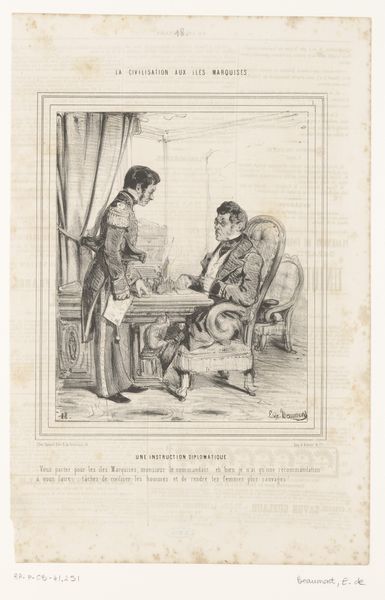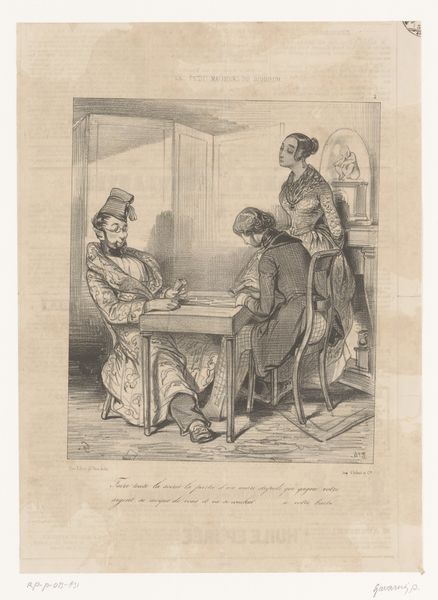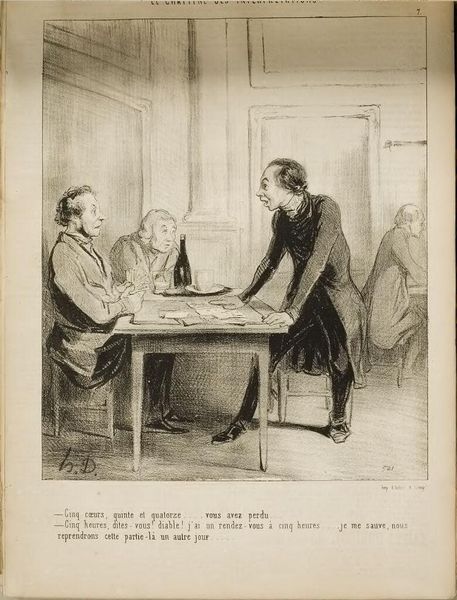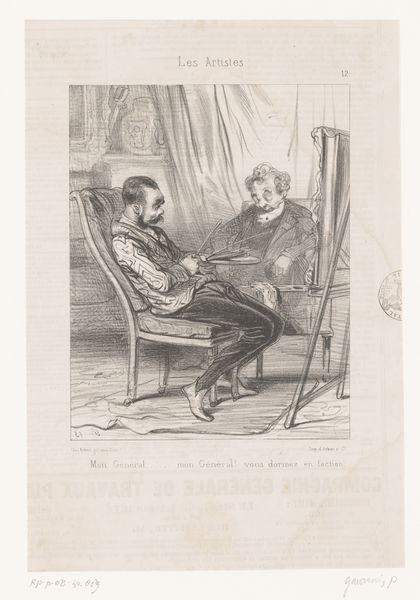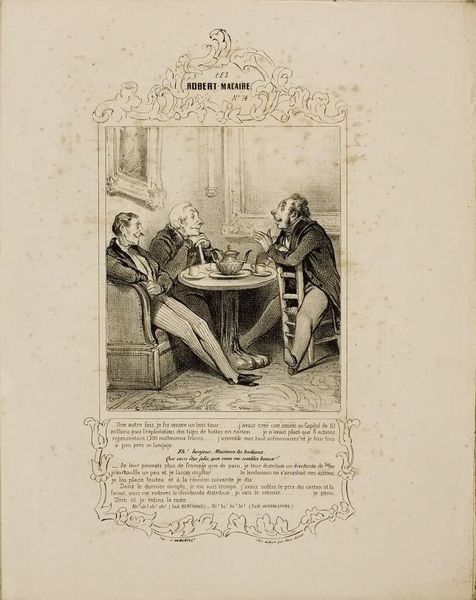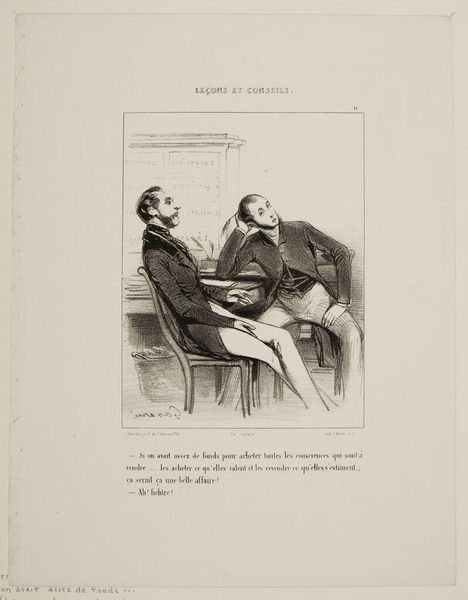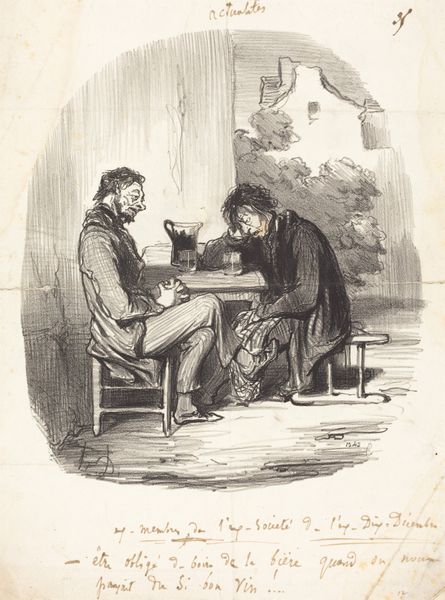
A six! . . . Qui est-ce qui excompte à six? . . . c. 19th century
0:00
0:00
Copyright: CC0 1.0
Editor: This print, by Paul Gavarni, is titled "A six!... Qui est-ce qui excompte à six?..." It depicts two men, one at a desk and the other standing behind him. It feels very critical. What societal commentary do you see in this piece? Curator: The print likely critiques financial practices and social inequalities of 19th-century France. Consider the implications of usury and who benefits from such systems, and who is exploited. The text hints at themes of mistrust and perhaps predatory lending. Who holds the power in this image? Editor: The standing man seems to have more power. I had not considered the implications of the title relating to usury. Curator: Exactly. Gavarni uses satire to expose uncomfortable truths about social hierarchies and economic exploitation. Does it make you think differently about it now? Editor: Definitely. It's a powerful look into 19th century social issues. Curator: Agreed. Art can be a powerful tool for activism and societal change.
Comments
No comments
Be the first to comment and join the conversation on the ultimate creative platform.
